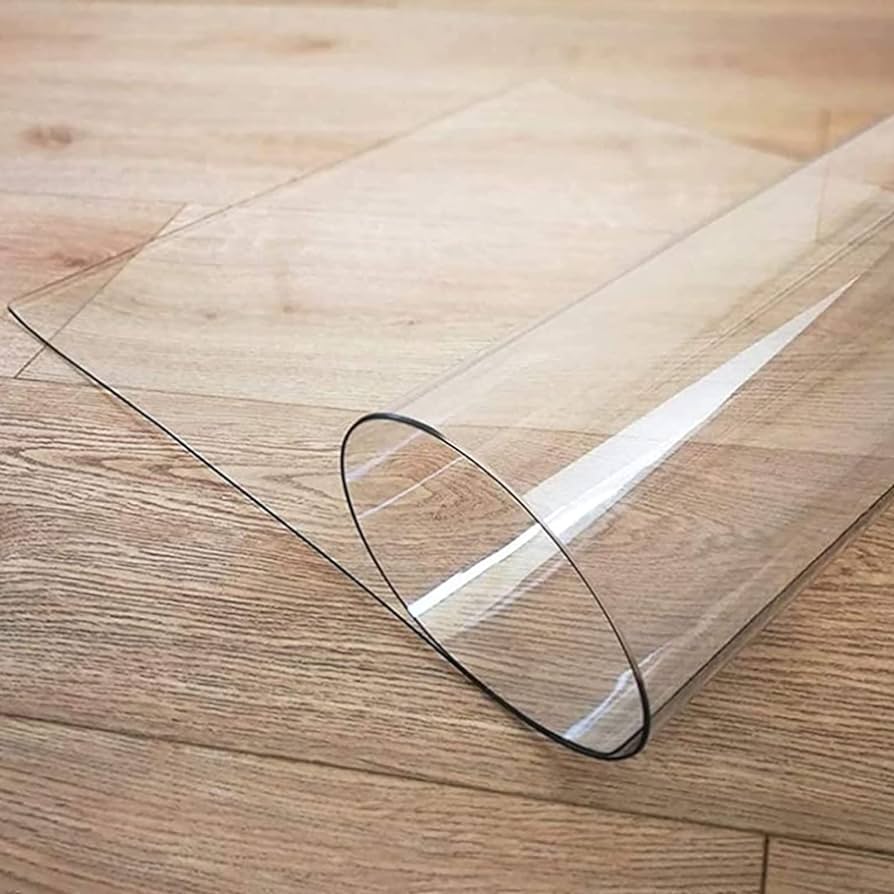Polypropylene rugs can be safely used on vinyl plank flooring without causing any damage. Vinyl plank flooring is compatible with various rug materials, including polypropylene, making it a versatile flooring option for different interior design preferences and needs.

Understanding The Compatibility Of Polypropylene Rugs And Vinyl Plank Flooring
Using polypropylene rugs on vinyl plank flooring can be a compatible and practical choice for your space. Polypropylene rugs, also known as olefin rugs, are known for their durability and resistance to stains and fading. They are made from synthetic fibers, which make them highly resistant to moisture and mold growth.
Vinyl plank flooring, on the other hand, is a popular choice for its durability, easy maintenance, and realistic wood-look appearance. It is made from PVC, a type of plastic, and has a protective wear layer that enhances its resistance to scratches and stains.
When it comes to the compatibility of polypropylene rugs and vinyl plank flooring, there are a few factors to consider. Firstly, the composition of the vinyl plank flooring should be examined. Vinyl plank flooring with a rigid core, such as SPC or WPC, is more stable and less prone to indentations. This makes it a suitable option for use with polypropylene rugs.
Furthermore, the potential interactions between polypropylene rugs and vinyl plank flooring are minimal. The synthetic fibers of polypropylene rugs are unlikely to cause scratches or damage to the surface of vinyl plank flooring. However, it is always recommended to use a rug pad underneath the rug to provide additional cushioning and prevent any potential slipping.
Factors To Consider For Safe Placement Of Polypropylene Rugs On Vinyl Plank Flooring
When placing polypropylene rugs on vinyl plank flooring, it is essential to consider a few factors to ensure safe usage. One crucial aspect to evaluate is the slip resistance of the rug on the vinyl plank flooring. Assessing the slip resistance helps to minimize the risk of accidents and maintain a secure environment.
Another factor to keep in mind is the weight of the rug. Evaluating the impact of the rug’s weight on the vinyl plank flooring is important as heavier rugs may cause indentation or damage to the flooring over time. It is advisable to choose rugs that are compatible in weight with the flooring.
Additionally, it is recommended to analyze the potential for chemical reactions between the rug and flooring materials. Some rugs may contain chemicals or dyes that could react with the vinyl plank flooring, leading to discoloration or other damage. Considering this aspect ensures the longevity of both the rug and the flooring.
By carefully considering these factors, one can safely use polypropylene rugs on vinyl plank flooring without compromising their quality or integrity.
Best Practices For Placing Polypropylene Rugs On Vinyl Plank Flooring
Best Practices for Placing Polypropylene Rugs on Vinyl Plank Flooring
When using polypropylene rugs on vinyl plank flooring, it is important to follow a few best practices to ensure the longevity and protection of both the rug and the flooring. One such practice is to use rug pads or non-slip underlays to prevent movement of the rugs and provide added cushioning. These pads also act as a barrier between the rug and the flooring, preventing any potential damage from friction.
Regularly rotating and cleaning the rugs is another important step to minimize wear and tear and maintain the integrity of the flooring. By rotating the rugs, the foot traffic and weight distribution are evenly dispersed, preventing excessive wear in specific areas. Additionally, cleaning the rugs on a regular basis helps remove dirt and debris that can accumulate and potentially cause damage.
Avoiding excessive exposure to direct sunlight or high temperatures is also crucial. Polypropylene rugs can be sensitive to prolonged exposure to sunlight and heat, which can result in fading or discoloration. Therefore, it is recommended to place the rugs in areas where they are not directly exposed to intense sunlight or high temperatures.
Frequently Asked Questions For Can You Use Polypropylene Rugs On Vinyl Plank Flooring
What Kind Of Rug Backing Is Safe For Vinyl Plank Flooring?
A rug with a non-slip backing made from natural rubber or latex is safe for vinyl plank flooring. It helps prevent slipping and protects the floor from scratches. Avoid rugs with adhesive or synthetic rubber backing as they may damage the vinyl surface.
What Rugs Should Not Be Used On Vinyl Planks?
Avoid using rugs with rubber or latex backing on vinyl planks as they can cause discoloration and damage. Additionally, steer clear of rugs with rough or abrasive backings, as they can potentially scratch or scuff the vinyl surface. Opt for rugs with non-slip pads or felt backing instead.
What Type Of Rug Pad Is Best For Lvp Flooring?
A non-slip rug pad made of natural rubber is the best choice for LVP flooring. It provides excellent grip without causing damage or leaving marks.
Is Vinyl Flooring Polypropylene?
No, vinyl flooring is not made of polypropylene. It is a synthetic material composed of polyvinyl chloride (PVC) and other additives. Vinyl flooring offers durability, easy maintenance, and a wide range of design options.
Conclusion
Using polypropylene rugs on vinyl plank flooring is a safe option due to their durability and non-slip properties. These rugs provide comfort and protection to your flooring without any risk of damage or scratching. Plus, the wide variety of designs and colors available in polypropylene rugs allow you to easily enhance the aesthetic appeal of your space.
So go ahead and confidently adorn your vinyl plank flooring with a polypropylene rug for a stylish and practical touch.




